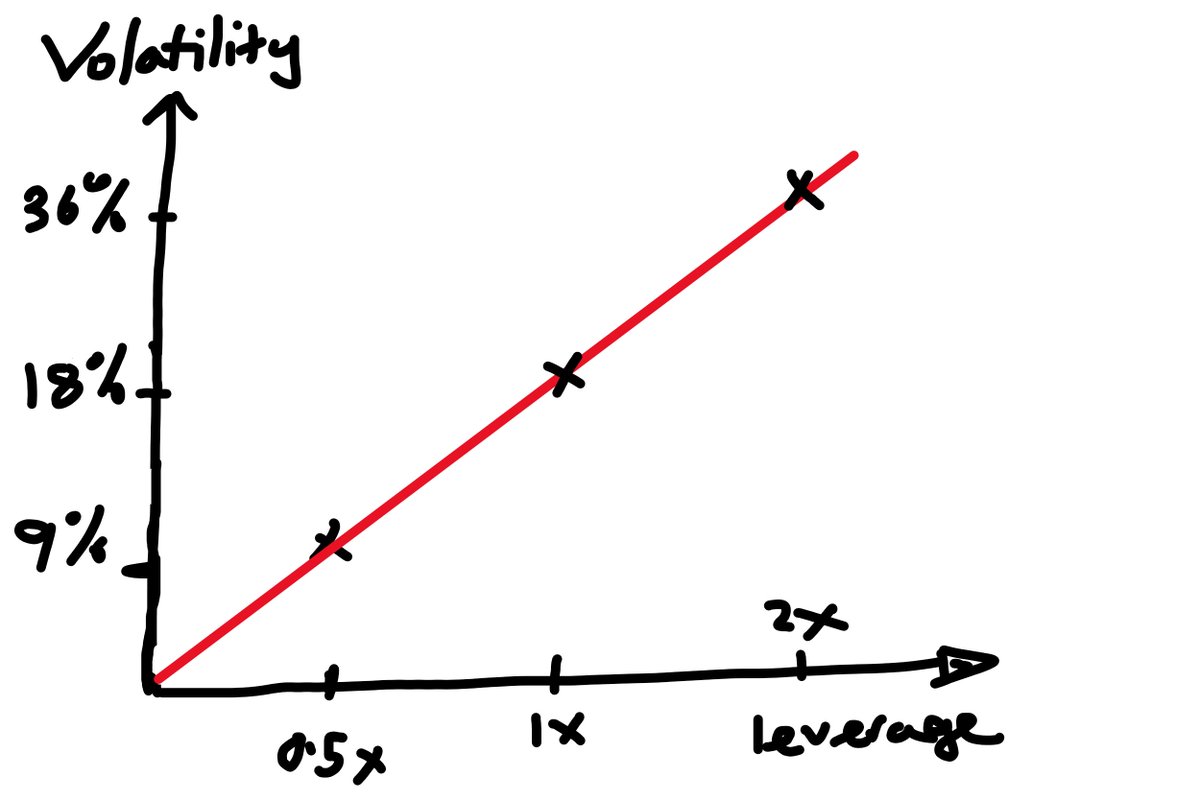
My focus recently has been on the crypto markets.
I don't have all the answers.
But I thought it would be useful to ramble a bit about the experience of entering a new market.
My perspective here is professional trading, but the concepts are valid for individuals too
1/n
I don't have all the answers.
But I thought it would be useful to ramble a bit about the experience of entering a new market.
My perspective here is professional trading, but the concepts are valid for individuals too
1/n
First, you've got to work out whether it's worth expending time, effort, and money in a new market.
There's an opportunity cost associated with looking at and implementing new things.
So you put together some "high-level business case" to see if it stacks up
2/n
There's an opportunity cost associated with looking at and implementing new things.
So you put together some "high-level business case" to see if it stacks up
2/n
This can be tricky because you don't know what you don't know.
So you seek out people who are doing it and ask them to share some of their experiences.
If you are serious, people will generally be very happy to talk to you. This game isn't as secretive as you might think.
3/n
So you seek out people who are doing it and ask them to share some of their experiences.
If you are serious, people will generally be very happy to talk to you. This game isn't as secretive as you might think.
3/n
This also helps you set up good relationships for sharing ideas and research in the future, which is important too.
You've also got to do some reading, some trading, some simple quant analysis to put together a quick picture of what is achievable on various timeframes.
4/n
You've also got to do some reading, some trading, some simple quant analysis to put together a quick picture of what is achievable on various timeframes.
4/n
You want to be careful you don't get stuck at this step.
You don't need to get everything right.
There's a lot you don't and can't know at this stage.
You want to have a rough idea of what would be achievable now, in six months' time, in a year's time...
5/n
You don't need to get everything right.
There's a lot you don't and can't know at this stage.
You want to have a rough idea of what would be achievable now, in six months' time, in a year's time...
5/n
You'll immediately notice that many of the tools, intuitions, and skills you have picked up trading other markets aren't of any use here.
All of the exchange interfaces are unfamiliar
You won't know all the wrinkles of the margin calcs
You won't know how to calculate pnls
6/n
All of the exchange interfaces are unfamiliar
You won't know all the wrinkles of the margin calcs
You won't know how to calculate pnls
6/n
You won't have execution algorithms
You won't have a consolidated view of exposures
You won't have your risk models and reports
You won't have a picture of the big players and flows
You won't have instincts around delta
You won't have instincts around where to lay off risk
7/n
You won't have a consolidated view of exposures
You won't have your risk models and reports
You won't have a picture of the big players and flows
You won't have instincts around delta
You won't have instincts around where to lay off risk
7/n
That's OK.
You build up these things over time.
And in a way, it's invigorating to be flying the plane without all the machines... at least for a while.
The tools you buy and build
The skills and intuitions you obtain over time by doing the reps and asking good q's
8/n
You build up these things over time.
And in a way, it's invigorating to be flying the plane without all the machines... at least for a while.
The tools you buy and build
The skills and intuitions you obtain over time by doing the reps and asking good q's
8/n
But you've got to have a realistic roadmap.
I trade fast stat arbs in futures markets.
But if we jumped in trying to do fast x-venue stat arbs in crypto from day 1 we'd make an almighty mess.
You've got to learn the game on more forgiving trades. first.
9/n
I trade fast stat arbs in futures markets.
But if we jumped in trying to do fast x-venue stat arbs in crypto from day 1 we'd make an almighty mess.
You've got to learn the game on more forgiving trades. first.
9/n
Thankfully there are many quite "forgiving" trades that you can put on to start working things out.
Simple basis arbs are a good place to start.
We started getting them on a few venues & accounting for every aspect of pnl + margin use.
Prioritize learning.
10/n
Simple basis arbs are a good place to start.
We started getting them on a few venues & accounting for every aspect of pnl + margin use.
Prioritize learning.
10/n
You'll grow familiar with the platforms, you'll start defining processes, clarifying requirements for the tools you need to buy and build, getting an idea of how to upskill the traders (and yourself!)
Iterative improvement is essential. You don't know what you don't know
11/n
Iterative improvement is essential. You don't know what you don't know
11/n
Over time, you'll start to improve your operational effectiveness, grow your intuition and build out your capability.
But you need to start with the easy stuff. Stuff that you can trade fairly mechanically.
Don't bet on intuition and skills you don't have yet!
12/n
But you need to start with the easy stuff. Stuff that you can trade fairly mechanically.
Don't bet on intuition and skills you don't have yet!
12/n
Right now, we're running quite a few simple implementations of different ideas.
All 80% solutions...
Spreadsheets, screeners, simple models, "bums in seats around the clock" stuff.
In this market, basic implementations of good ideas can get you a long way.
13/n
All 80% solutions...
Spreadsheets, screeners, simple models, "bums in seats around the clock" stuff.
In this market, basic implementations of good ideas can get you a long way.
13/n
Prioritizing implementation over perfection is important.
But so is not making an almighty mess or expensive mistake.
So balance is important.
And it's important to actually *iteratively improve* rather than keep chasing shiny new 80% solutions for new things.
14/n
But so is not making an almighty mess or expensive mistake.
So balance is important.
And it's important to actually *iteratively improve* rather than keep chasing shiny new 80% solutions for new things.
14/n
The key things:
Be realistic. Everything is new and takes time. Start easy. Pick forgiving trades to start. Do the reps, build your knowledge and intuition.
The market is such that the very simplest implementation of a good idea is really all you need right now.
15/n
Be realistic. Everything is new and takes time. Start easy. Pick forgiving trades to start. Do the reps, build your knowledge and intuition.
The market is such that the very simplest implementation of a good idea is really all you need right now.
15/n
But a balanced approach is required between:
- Implementing new ideas fast with 80% solutions
- Not making an almighty mess.
So you want to have some systematic approach to passing over everything, iteratively improving and building out capability.
16/16 Fin.
- Implementing new ideas fast with 80% solutions
- Not making an almighty mess.
So you want to have some systematic approach to passing over everything, iteratively improving and building out capability.
16/16 Fin.
• • •
Missing some Tweet in this thread? You can try to
force a refresh








